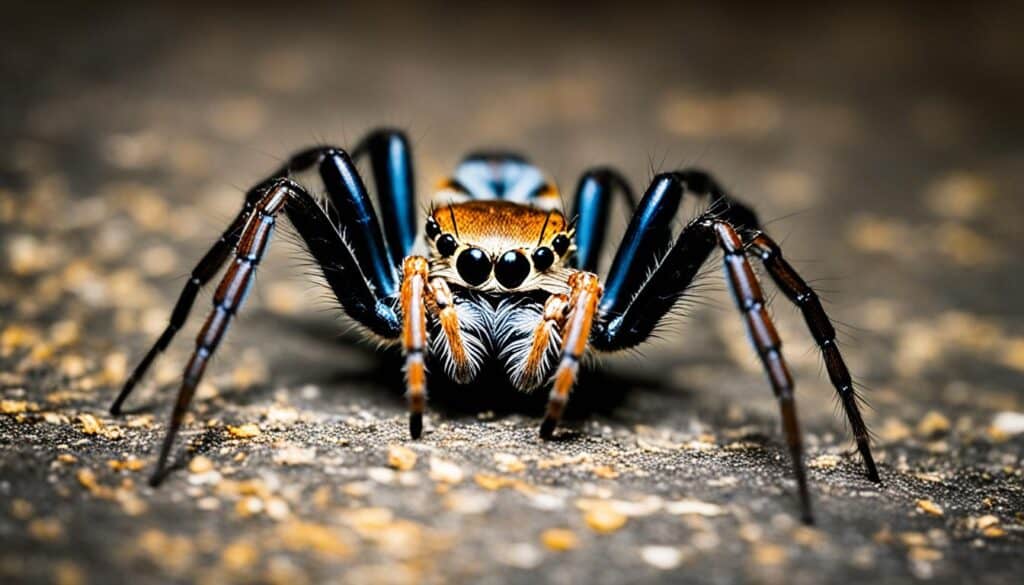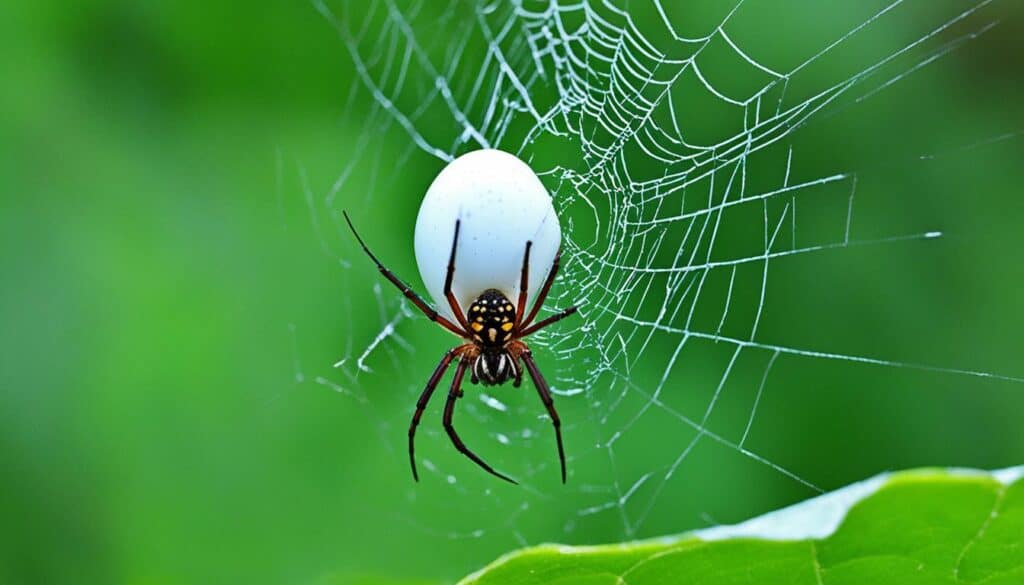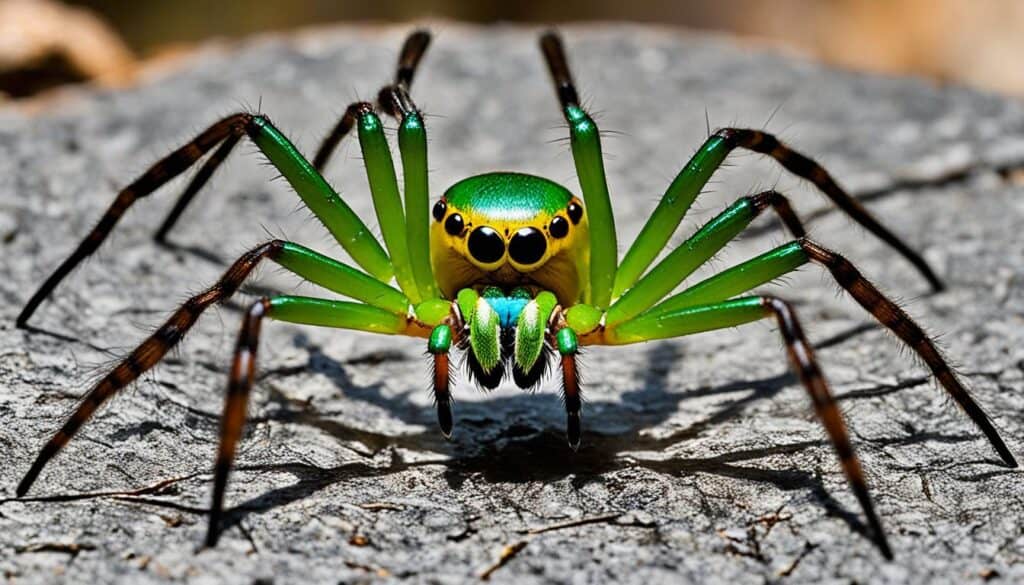Picture this: a spider that freezes for over an hour if it senses danger. That describes Joro spiders perfectly. A research study from the University of Georgia found something interesting. While most spiders get back to normal in less than two minutes after being disturbed, Joro spiders stay still for more than 60 minutes. They really know how to enjoy some alone time!
Joro spiders, however, are known for more than just their stillness. These creatures from the East Coast are making waves. Not because they are violent, but due to their incredible ability to reproduce. It’s quite amazing that a single Joro spider can lay up to 1,000 eggs before the end of fall. They certainly leave a lasting legacy!
These spiders were first seen in Georgia in 2013. Since then, Joro spiders have quickly spread across the Southeast, their population reaching millions. This growth isn’t just because they find cozy spots in our urban areas. It’s also because they are gentle and reproduce at an astonishing rate. Want to know how this impacts humans? Read on to learn the fascinating aspects of Joro spider reproduction, their life cycle, behavior, and ways to manage this spreading species.
Key Takeaways
- The Joro spider freezes in place for over an hour when disturbed, significantly longer than other spider species.
- Female Joro spiders can lay up to 1,000 eggs before dying, contributing to their rapid population growth.
- These spiders have spread swiftly since their arrival in Georgia in 2013, becoming widespread across the Southeast.
- Joro spiders are non-aggressive and unlikely to bite humans or pets unless cornered.
- They demonstrate remarkable adaptability to urban environments, setting up webs in unconventional places.
Introduction to Joro Spiders
The Joro spider, with its bright colors, comes from East Asia. It looks like it’s from a sci-fi movie. This species has traveled across the East Coast of the U.S. without needing a passport. Its yellow and blue-black markings are quite the sight.
These spiders are not only a sight to behold but also prolific breeders. Female Joros can lay 400–500 eggs. Imagine waking up to a house full of spiders! They use the wind to travel far, like a soldier parachuting across landscapes.
These spiders were first seen in Georgia in 2014. Since then, they’ve spread quickly, much like a fast-delivered package. They’ve expanded 50-80 miles from Georgia, reaching Alabama, the Carolinas, and Tennessee. Now, they are a common sight along the East Coast.
Have you seen an adult female Joro spider? They can have a body length of 1 inch and a leg span of 4 inches. Their striking black and yellow patterns stand out. Male spiders, less colorful, measure about 0.3 inches and blend in well with their surroundings.
Watching these spiders spread is fascinating. They might compete with local species but also add to our ecosystems. They’re not just moving into new areas. They’re becoming a vital part of life’s complex web.
The Timid Nature of Joro Spiders
We often think of avoiding spiders. But the Joro spider, or Trichonephila clavata, changes that view. These spiders aren’t after us. In fact, their peaceful nature could teach us a thing or two about harmony.
The University of Georgia research team, led by Andy Davis, made an interesting find. Joro spiders would rather live with us than fight. That’s right. They prefer to remain still at gatherings, enjoying the ambiance without causing a scene.
A study looked at over 450 spiders from ten species. Joro spiders didn’t move for over an hour when disturbed. That’s some serious patience! Other spiders got back to business in just ninety seconds. But Joro spiders stayed still, without even a leg twitch.
This calm reaction is a smart adaptation to living with humans. Joro spiders have figured out that avoiding conflict with us is the best approach. This strategy helps them survive and thrive in our neighborhoods.
It’s not just Joro spiders that act this way. Their relatives, the golden silk spiders, are also quite timid. Yet, Joro spiders take their non-confrontational attitude a step further. This makes them a prime example of how non-aggressive spiders can be.
How Joro Spiders Mate
Ever tried online dating? Well, Joro spider mating habits may make your Tinder experiences look easy! Imagine tiny male Joro spiders bravely surfing the air on silk strands. They’re like tiny heroes of love.
These bold males go toward larger females, risking everything for love. The size difference is huge. Adult female Joro spiders can be 3-4 inches big, while males are much smaller.
The way these spiders mate is truly amazing. The males are careful but quick. They rush to avoid being eaten after mating. Love can be dangerous!
The payoff for their bravery is huge. A female Joro can lay up to 1,500 eggs a year. This helps their kind spread far, from Georgia to South Carolina and maybe further.
Using the ballooning technique, they can travel up to 100 miles. They handle cold better than their cousins, allowing them to conquer new areas. It’s an impressive journey that even impresses birds.
In the end, Joro spider mating habits show a mix of danger, speed, and success. It’s a wilder love story than any show on TV!
Joro Spider Reproduction
Alright, folks, let’s dive into the wild world of Joro spider reproduction. These vibrant eight-leggers come from Asia. They are experts at increasing their numbers. Imagine this—a single female lays between 400 and 1,500 eggs each year. That’s a lot of baby spiders on the way!
The mating season peaks in September. That’s when male Joro spiders put on a show. They do a silk-riding dance to impress the females, who are bigger and scarier. If they’re lucky and avoid being bitten, they succeed. Then, they wait for their babies to hatch.
The female wraps her eggs in egg sacs. Each sac holds 400 to 500 eggs. It looks like a nursery in each sac. These eggs soon hatch into spiderlings ready to explore.
Let’s talk about how these spiderlings face the world. They use a “ballooning technique” to travel on the wind. This can take them 50 to 100 miles away. It’s their way to explore and find new places to live. This skill helps them spread fast and far.
Since landing on the East Coast around 2013 or 2014, Joro spiders have made a name for themselves. Their will to spread and thrive is impressive. They make sure their family grows across new areas—literally!
Nesting Habits of Joro Spiders
I’ve watched many unique creatures, but Joro spiders stand out. They’re known for their *web construction* skills and *Joro spider nesting* habits. Let’s explore the beauty of their golden webs.
These spiders build their webs anywhere, from peaceful areas to busy ones. You can see their intricate webs in places like backyards, city parks, and even on BBQ grills. They adapt well to different places.
The look of their webs is important for their survival. Their webs catch many insects and help control pests. This is part of their *environmental impact*.
When it’s time to lay eggs, a female can have up to 1,500. The young spiders use the “ballooning technique” to spread far. They can travel up to 100 miles. This makes controlling their numbers hard.
Since arriving in northeast Georgia in 2014, they’ve spread much. By 2022, they were seen 75 miles from their first spot. They’re true overachievers!
Though they breed a lot, these spiders aren’t looking for trouble. If you touch their webs, they prefer to run. Their bite is like a bee sting – not too bad for humans. Yet, they can still surprise you during yard work.
Looking at Joro spiders, it’s impressive how they fit into various places. Their *web construction* and amazing *adaptation* help them spread. The *environmental impact* of their spread is a topic of debate. But their breathtaking webs add a special touch to any area.
Joro Spiders in the Ecosystem
I find it amazing how Joro spiders have snuck into our environments. They use a special “ballooning technique” to float on silk and move up to 100 miles. With striking yellow and black colors, they stand out in Georgia and South Carolina.
Their role in the ecosystem especially catches my attention. By eating insects like the dreaded stink bug, they help control these pests. Imagine, one spider can have up to 1,500 babies a year, providing lots of natural bug fighters!
This eating habit changes how we see local bug populations. The Joro spiders work in our gardens, eating pests other spiders ignore. They also become food for birds and other creatures. It’s quite the shake-up in how things balance out.
Joro-spider bites don’t usually harm us, except for those with allergies. But, scientists are still looking into how they affect the local animals. Yet, it seems they’re helping more than hurting, especially with stink bugs.
Human Interaction and Public Perception
Meeting a Joro spider can feel like you’re in a spider-themed film. But not everyone is scared. While they do cause some screams, it’s key to clear up some myths. These large spiders from East Asia don’t want to scare you.
Seeing these colorful spiders might make you grab your broom. But don’t worry too much. Their bite might itch, but it won’t cause a health crisis. These spiders are spreading across the US, making homes from Georgia to Baltimore.
Joro spiders are calm around humans, building huge webs where we live. You might think about how to keep them away. It takes patience and learning. With climate changes, they could move further north, affecting our environment.
People have mixed feelings about Joro spiders. Some are curious, while others wish they hadn’t spread from Georgia. They do eat pests, which could be helpful. But we need more research to understand their full impact.
Next time you see a Joro spider, think about the studies on them. Understanding them better might change how you feel about seeing one. It could turn a scary moment into a chance to appreciate nature.
Conclusion
As we end our journey into the world of Joro spiders, we see these creatures are not just scary. These vibrant yellow spiders with four-inch legs came from Japan to the Southeastern U.S. by balloon-like flying. They arrived in 2021, starting in Georgia and might reach up to New York and New Jersey.
Joro spiders traveled on cargo and became known in North America. They are colorful and may scare some people, but their venom isn’t deadly. Living with them might seem odd, but it’s wise as we see how they fit into local nature and affect insect numbers.
We learn more about managing Joro spiders by studying them. Their life, from flying on silk to their bright colors, shows us the beauty of nature and our role in it. Let’s look at these spiders with wonder and curiosity instead of fear.




